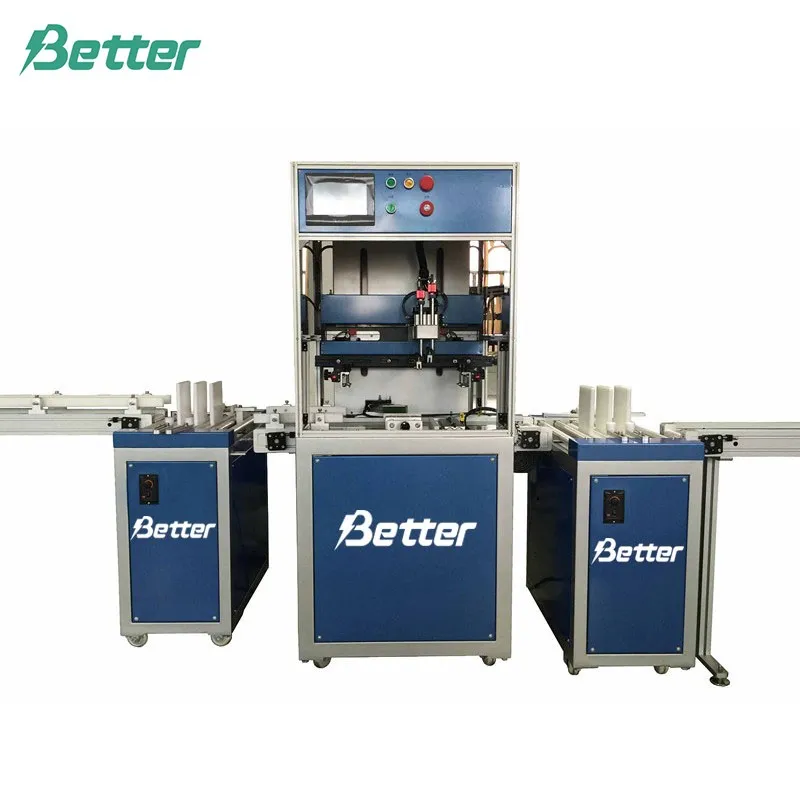
How Screen Printing Speeds Up Battery Production
2025-11-13 15:10Contents
What Is Screen Printing in Battery Manufacturing?
Imagine you're setting up a battery factory and wondering how to apply those thin layers of conductive paste onto electrode sheets without wasting time or materials. That's where screen printing comes in. In battery manufacturing, a screen printing machine uses a mesh screen to push ink or paste through, creating precise patterns on substrates like foil or paper. It's not the same as printing T-shirts—here, it's all about depositing uniform layers for lithium-ion or lead-acid batteries.
For folks new to this, screen printing handles the electrode coating process. You load your paste, align the screen, and the machine squeezes it out evenly. This method has been around for decades but shines in modern battery production because it scales well from lab tests to full runs. If you're dealing with custom battery designs, like for electric vehicles, understanding this basics helps you spot bottlenecks early.
Why Do Batteries Need Such Precise Printing?
Batteries aren't just power packs; they rely on microscopic layers to work right. Think about the electrodes: if the conductive material isn't spread evenly, you get hot spots or weak spots that shorten battery life. Users in the field often ask, "Why can't I just spray it on?" Well, spraying lacks control—screen printing for batteries ensures thickness down to microns, which matters for energy density.
In daily operations, imprecise printing leads to rejects. Say you're making pouch cells for consumer electronics. Uneven paste means inconsistent charging, frustrating your end customers. Precise printing cuts that risk. It also ties into safety—poor layers can cause dendrite growth, risking shorts. For factory managers, knowing this means prioritizing machines that hold tolerances tight, saving headaches down the line.
How Does a Screen Printing Machine Work Step by Step?
Let's break it down simply, like walking through your shop floor. First, you prepare the screen: it's a fine mesh stretched over a frame, with areas blocked out to form your pattern—think of it as a stencil on steroids. You mix your electrode paste, usually carbon or metal-based, to the right viscosity.
Step one: Load the substrate. The machine clamps down the electrode foil or current collector. Step two: Align the screen precisely over it—alignment errors here kill quality. Step three: Flood the screen with paste using a squeegee blade that pushes it through the open mesh areas. The pressure and speed are key; too fast, and it's blotchy; too slow, and it dries out.
Step four: Lift the screen and let the paste settle or dry partially. Modern battery screen printing machines automate this with vision systems for auto-alignment, cutting setup time from minutes to seconds. If you're troubleshooting, check the squeegee angle first—it's often the culprit for uneven lines. This process repeats for both anode and cathode sides, building your battery's core efficiently.
Common Challenges in Battery Screen Printing and Quick Fixes
Running a production line? You'll hit snags like paste clogging the screen or misalignment from vibrations. One common gripe: "My prints are streaky after a few hours." That's usually drying paste buildup. Quick fix: Switch to automated cleaning cycles between runs—many machines have built-in ultrasonic cleaners.
Another issue: Substrate warping under heat. If your foil curls, prints shift. Solution? Use vacuum tables to hold it flat. For high-volume ops, dust contamination is sneaky— it causes pinholes in the layer. Keep a cleanroom protocol, or invest in enclosed machines. These tweaks aren't rocket science but can boost yield by 20%. If you're scaling up, test small batches to nail these before going full throttle.
How Screen Printing Speeds Up Your Production Line
Time is money in battery making, right? Traditional coating methods like slot-die can be finicky with setup, taking hours to dial in. Enter screen printing machines: they swap screens in under a minute for different patterns, letting you run multiple designs daily without downtime.
Picture this: A manual roller coater might handle 10 meters per minute, but a good screen printer hits 50-100 meters. That's five times faster, directly cutting cycle times. Automation adds more: PLC controls sync with drying ovens, so no waiting. For teams juggling EV battery prototypes, this means faster iterations—test a new paste formula today, produce tomorrow. It's not just speed; it's reliable throughput that keeps orders flowing.
Key Benefits of a Reliable Screen Printing Machine
Beyond speed, a solid machine pays off in ways you feel quarterly. First, cost savings: Less paste waste thanks to precise deposition—expect 10-20% material efficiency. Second, versatility: Handles thick pastes for lead-acid grids or thin ones for lithium cathodes, one tool for many jobs.
Third, quality consistency: Servo motors ensure even pressure, so every sheet matches specs. This means fewer QA rejects and happier clients. Environmentally, it's gentler—less solvent use than spraying. For growing ops, scalability shines: Start small, add modules later. Overall, it's a workhorse that boosts margins without the fluff.
Tips for Choosing the Right Battery Screen Printing Machine
Overwhelmed by options? Start with your volume: Lab-scale? Go for benchtop models under $50K. High-throughput? Look for inline systems with 100m/min speeds. Check compatibility—does it take your paste types? User reviews highlight ease of maintenance; avoid ones needing constant tweaks.
Don't skip demos: Run your substrate through it. Factor in support—global vendors with local techs save trips. Budget for extras like auto-cleaners. A smart pick aligns with your line, not just specs on paper. For instance, if you're in custom battery runs, prioritize quick-change screens.
At Better Tech Group, we've honed this over 30 years in battery gear. Our battery screen printing machine stands out for its robust build and user-friendly controls, helping factories worldwide cut production time while keeping quality high. Check out our Battery Screen Printing Machine—it's designed for real-world speed without the hassle.

